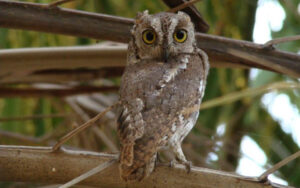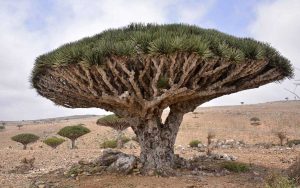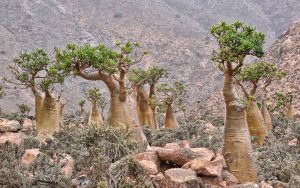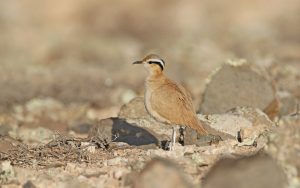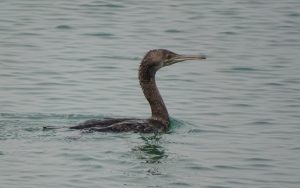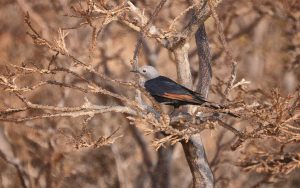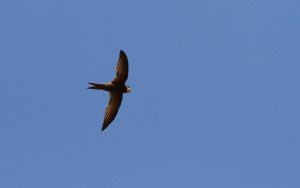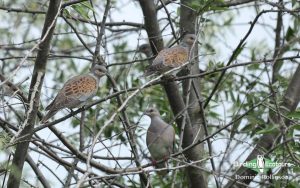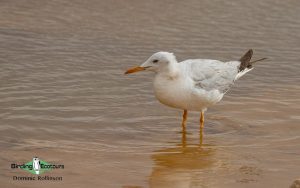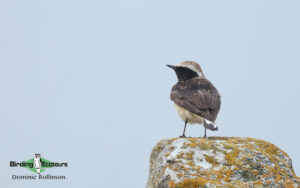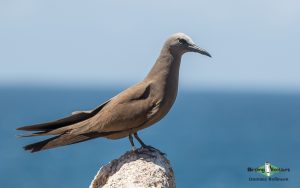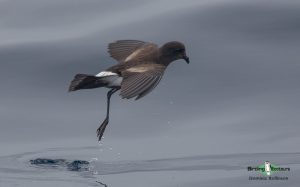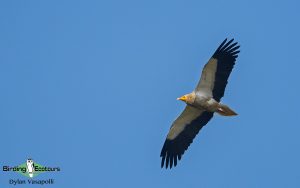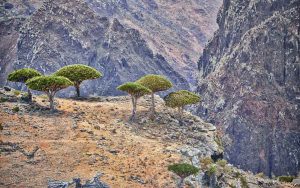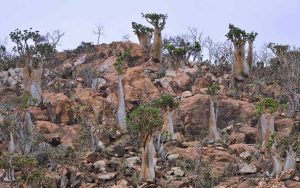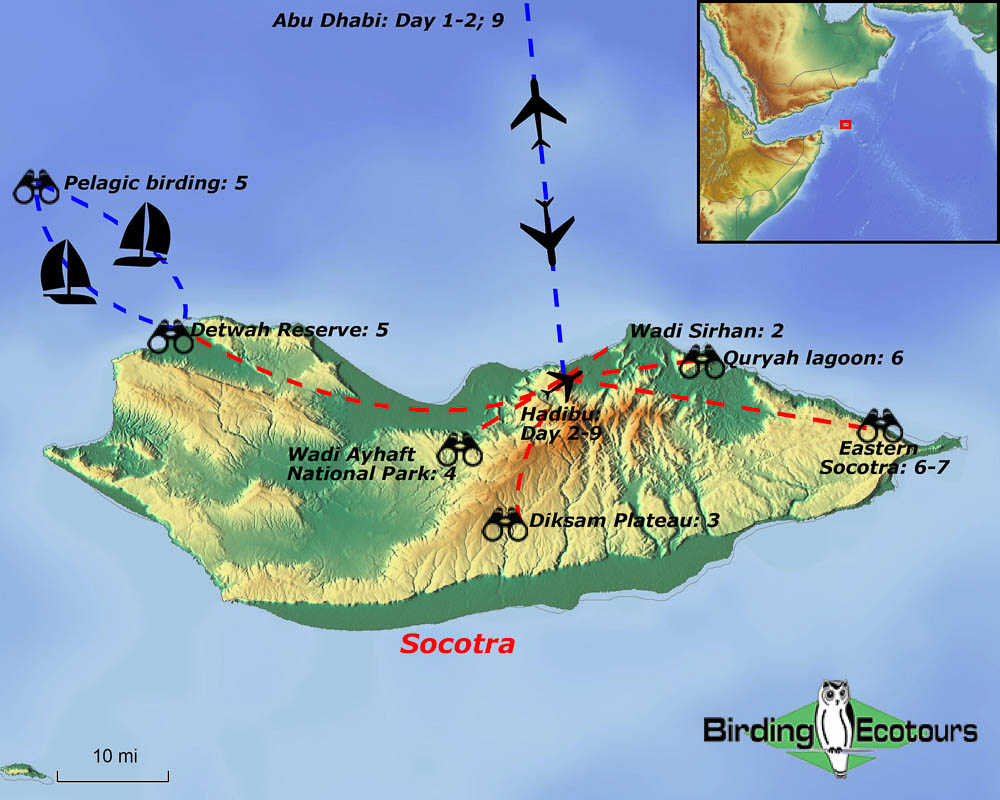Socotra Birding Tour: Endemic Birds and Dragon Blood Trees
Go to: Socotra Birding Tours | Birding Tours in Africa | All our birding tours
Socotra Birding Tour: Endemic Birds and Dragon Blood Trees
October 2025/2026
We are tentatively offering this tour but please contact us regarding visas and other details before you book.
The Socotra Archipelago is unlike anywhere else on earth. These isolated and untouched desert islands offer visitors a truly memorable experience, with stunningly beautiful scenery and iconic wildlife, in a remote and peaceful setting. Our Socotra birding tour focuses on seeing the endemic birds and plants of the island, rare seabirds, and migratory species passing through.
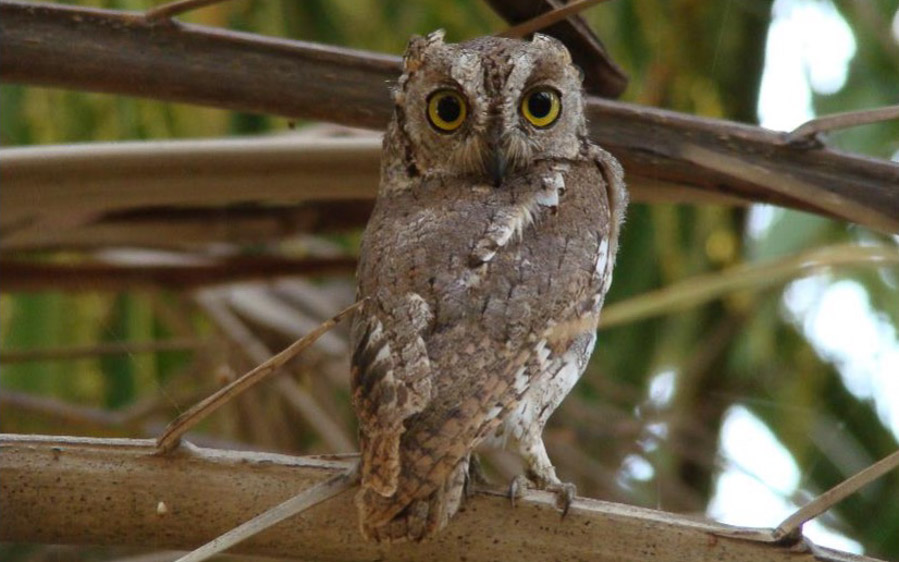
With six full days on the island of Socotra, this birding tour will offer a comprehensive exploration of Socotra wildlife and landscapes. We target all nine bird species endemic to Socotra, including Socotra Scops Owl, the handsome Socotra Sunbird, the odd Socotra Warbler, and perhaps the most desired, Socotra Golden-winged Grosbeak. Aside from these star endemics, we will look for range-restricted species, such as Socotra White-eye, Somali Starling, and Forbes-Watson’s Swift. This Socotra birding tour will also include a pelagic boat trip to target rare seabirds that breed in the area like Socotra Cormorant, Persian Shearwater and Jouanin’s Petrel. Our visit coincides with the height of the autumn migratory period when the islands are an important stopping point for many migratory species traveling south from Eurasian breeding areas, offering the exciting opportunity to encounter a number of interesting migrants.
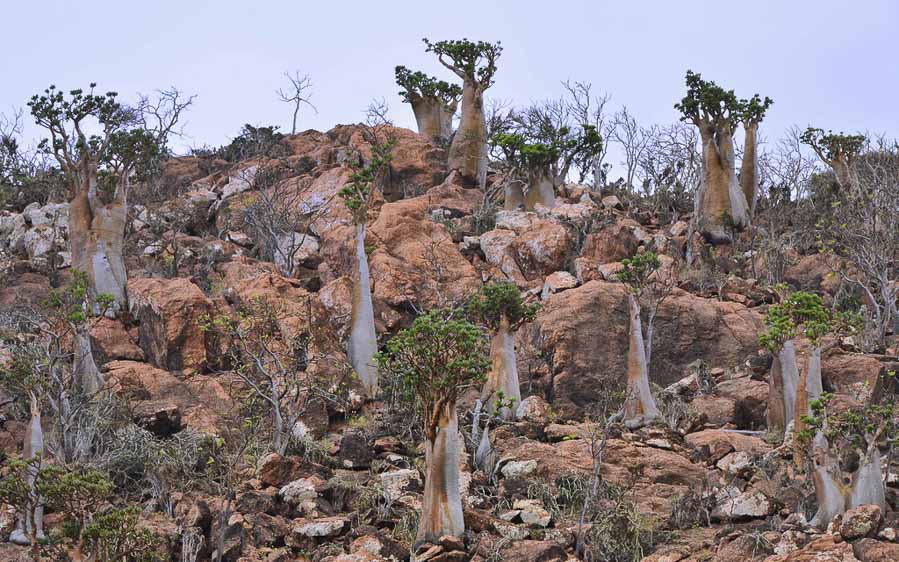
Socotra’s landscapes are stunning, with towering sand dunes and endless pristine beaches meeting the clear turquoise sea, and desert wadis set against a backdrop of impressive mountains and staggering rock formations. While in this island paradise, we make a special effort to enjoy its iconic endemic wildlife, such as the Socotra Dragon Blood Tree, Socotra Cucumber Tree, and Socotra Chameleon, and visit diverse reefs teeming with exotic species. Despite its remoteness, we use a comfortable air-conditioned hotel, enjoy simple but good food, and meet friendly local people throughout the trip.
This will be a once-in-a-lifetime trip, and we look forward to showing you Socotra’s endemic birds, beautiful natural features, and memorable wildlife. The timing of this tour is ideal for continuing to our exciting Oman: Endemic birds of the Arabian Peninsula, which follows the Socotra trip. In Oman, our main targets are species endemic to the Arabian Peninsula, such as Arabian Golden-winged Grosbeak and Arabian Eagle-Owl, along with iconic birds such as the monotypic Grey Hypocolius, all while being immersed in breathtaking desert environments.
Detailed Itinerary (9 days/ 8 nights)
Day 1. Arrival in Abu Dhabi
Non-birding day with your arrival into Zayed International Airport in Abu Dhabi, in advance of our morning flight to Socotra. We will meet in our hotel near the airport for an evening welcome dinner together.
Overnight: Abu Dhabi
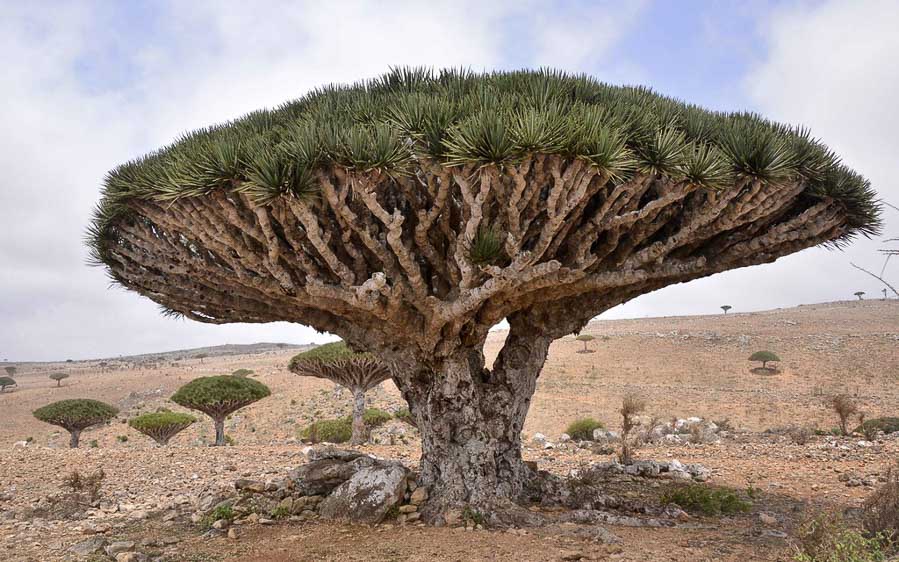
Day 2. Flight to Socotra and birding Wadi Sirhan
After our short morning flight, we will arrive on the peaceful island of Socotra and check in to our comfortable hotel, which will be our base for the whole tour. We begin by visiting the long, pristine white sands of Delisha Beach, where we will enjoy the first of many beautiful vistas and enjoy our first Socotran food. After lunch, we will start our birding with a visit to the local Wadi Sirhan, where we should see the most abundant endemic, the Socotra Sparrow, alongside the near-endemic Socotra White-eye, and the endemic subspecies of Great Grey Shrike. Common species here include Common Moorhen, Red-knobbed Coot, Western Reef Heron, Sooty Gull, Egyptian Vulture, Laughing Dove and Brown-necked Raven. Migratory waterbird species such as Garganey, Black-winged Stilt, Little Ringed and Kentish Plovers, Common and Wood Sandpipers, Temminck’s Stint, and Glossy Ibis are recorded regularly at the site. After dinner at the outside restaurant with sea views, we will search near our hotel for Socotra’s single nocturnal endemic, the Socotra Scops Owl.
Overnight: Summerland Hotel
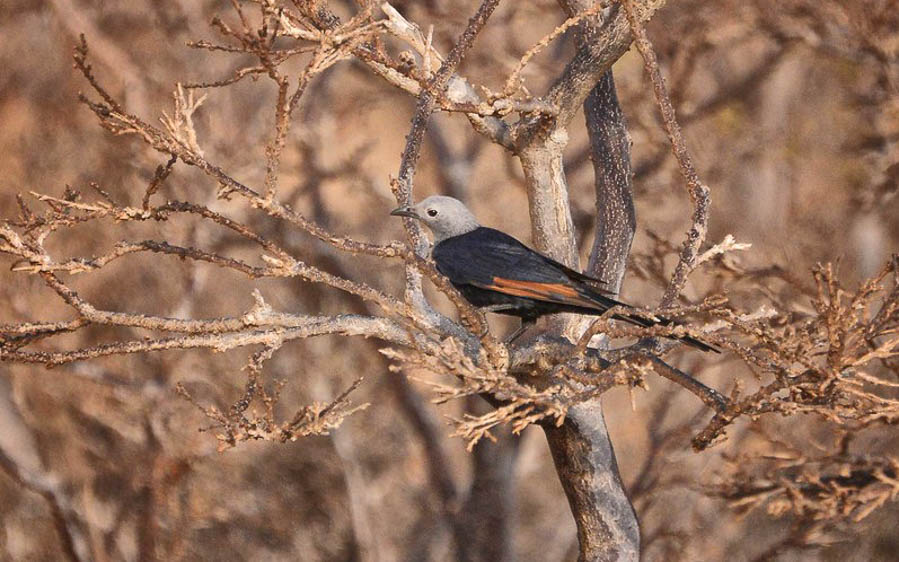
Day 3. Diksam Plateau
Today we visit the highest area on Socotra, the Diksam Plateau, home to the highest concentration of ancient Socotra Dragon Blood Trees. The setting here is truly spectacular, with deep ravines and gorges which drop 2300 feet (700 meters) vertically to the valley floor, and sweeping plains of limestone adorned with a sea of Socotra Dragon Blood Trees. Here, we hope to encounter many of Socotra’s endemic bird species, which include the Vulnerable (IUCN) Socotra Buzzard, Socotra Sunbird, Socotra Warbler, and Socotra Starling.
Our main target, however, is the Socotra Bunting, the rarest endemic. We will walk some of the trails hoping to encounter Somali Starling, Great Grey Shrike, Long-billed Pipit, White Wagtail, Common Kestrel, and Isabelline, Desert, and Pied Wheatears, among large numbers of Egyptian Vultures. Our picnic lunch under the shade of the Socotra Dragon Blood Trees will not easily be forgotten! This day will likely be a big highlight of the tour, with stunning scenery and star birds expected throughout.
Overnight: Summerland Hotel
Day 4. Wadi Ayhaft National Park
Wadi Ayhaft National Park is one of the most iconic of Socotra’s natural features, with its limestone formations and scrub forests often used to depict the island’s beauty. Today, we will try for what is perhaps Socotra’s most sought-after bird, the Socotra Golden-winged Grosbeak, which is more common in the montane scrub and dry wadis here than high up on the Diksam Plateau. Wadi Ayhaft is also a good spot for the range-restricted, Forbes-Watson’s Swift, alongside Bruce’s Green Pigeon, Rock Martin, and Cinnamon-breasted Bunting, in addition to the birds mentioned for the previous day. While exploring the area, we will enjoy seeing the unusual Socotra Cucumber Tree, Frankincense Tree, and endemic Socotra Chameleon. After our birding session, there will be the opportunity to have a refreshing swim in the natural freshwater pools in the canyon.
Overnight: Summerland Hotel
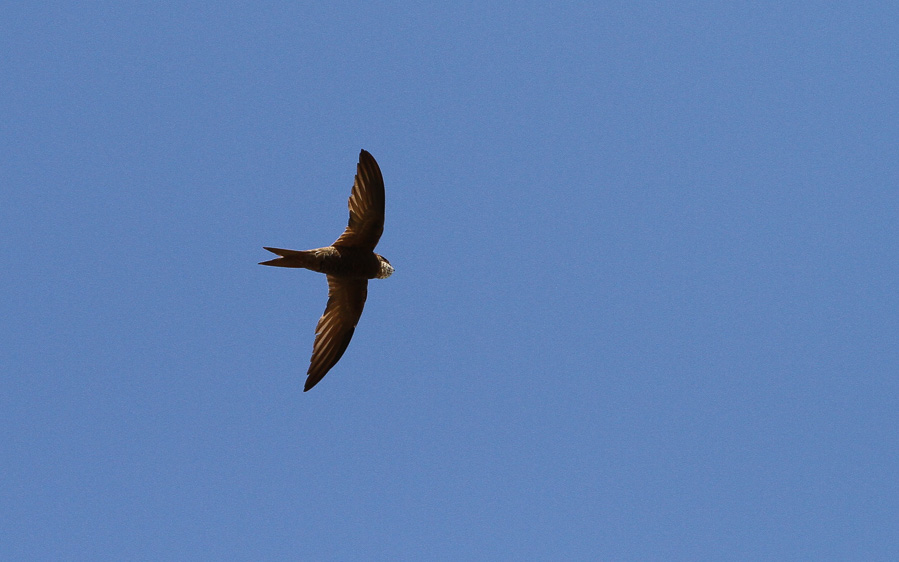
Day 5. Pelagic boat trip and Detwah Reserve
After breakfast, we drive west to Qalansiya, a traditional Socotri fishing town and the second largest town on the island after the capital, Hadibu. The beach next to this town is stunning, often described as Socotra’s most idyllic beach due to its bright turquoise waters and alluring white sand, in every direction. Here we board a boat in our quest for rare seabirds that breed in the area, with the range-restricted Socotra Cormorant, Jouanin’s Petrel, and Persian Shearwater as our main targets. Sooty Gull, Lesser Black-backed Gull, Brown Noddy, and Brown Booby are common in the area, and we will be on the lookout for some rarer migrants that might be passing through, such as Red-necked Phalarope, Red-billed Tropicbird, Wilson’s Storm Petrel, and Bridled, Gull-billed, Caspian, Great Crested, Lesser Crested, Common and Sandwich Terns. Large groups of Spinner Dolphins are often seen, while other dolphin species, turtles, rays, and whales are all possibilities during the trip.
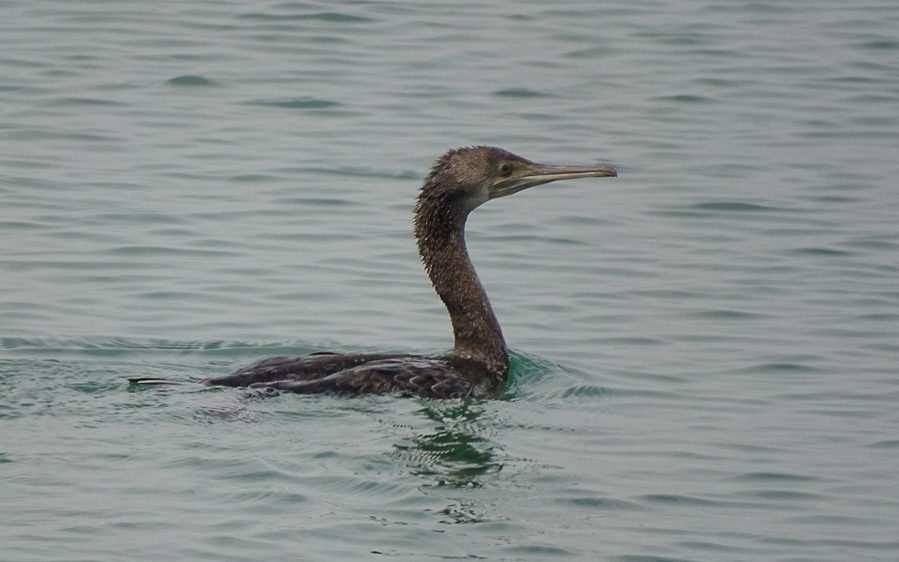
During our boat tour, we will visit Shoab Beach, another picturesque and untouched beach that is only accessible by boat. After spending a leisurely morning out on the water, we will have a picnic lunch at the Detwah Reserve, a marine protected area. This is one of the most important wetland areas in Socotra and is the only Ramsar-designated site in Yemen. Here, we will look for Red-knobbed Coot, Little Egret, Western Reef, Grey, and Purple Herons, Black-winged Stilt, Little Ringed, Common Ringed, Kentish, Grey, Tibetan Sand and Greater Sand Plovers, Common and Wood Sandpipers, Temminck’s and Little Stints, among many other possible migrants. We will have the chance to swim or snorkel in the lagoon before heading back to our comfortable hotel.
Overnight: Summerland Hotel
Days 6-7. Southern and eastern Socotra
We continue birding across Socotra, discovering the more remote parts of the island in the south and east. We will spend time looking for our final endemic, the Socotra Cisticola, in the coastal lowlands, where it forages in low bushes and scrub. We will explore several infrequently visited wetland sites, such as Quryah lagoon, which are attractive areas for migratory species. The number of species which have been recorded on passage in Socotra is high and includes some which might seem out of place on a desert island! We could encounter a range of waterbirds including Greater and Lesser Flamingos, Spotted Crake, Indian Pond Heron, Black-crowned Night Heron, Squacco Heron, Great Egret, Glossy Ibis, Eurasian Curlew, Eurasian Whimbrel, Common Greenshank, Dunlin, Curlew Sandpiper, Common Snipe, Pacific Golden Plover, Northern Shoveler, and Northern Pintail. We will also encounter landbirds such as Eurasian Roller, Blue-cheeked Bee-eater, Eurasian Golden Oriole, European Turtle Dove, Common Cuckoo, Greater Short-toed Lark, Bluethroat, and Western Yellow Wagtail. Socotra Sunbird, Socotra Warbler, Socotra Starling, Socotra Sparrow, Socotra White-eye, and Somali Starling should be abundant, providing good opportunity for photographing these species.
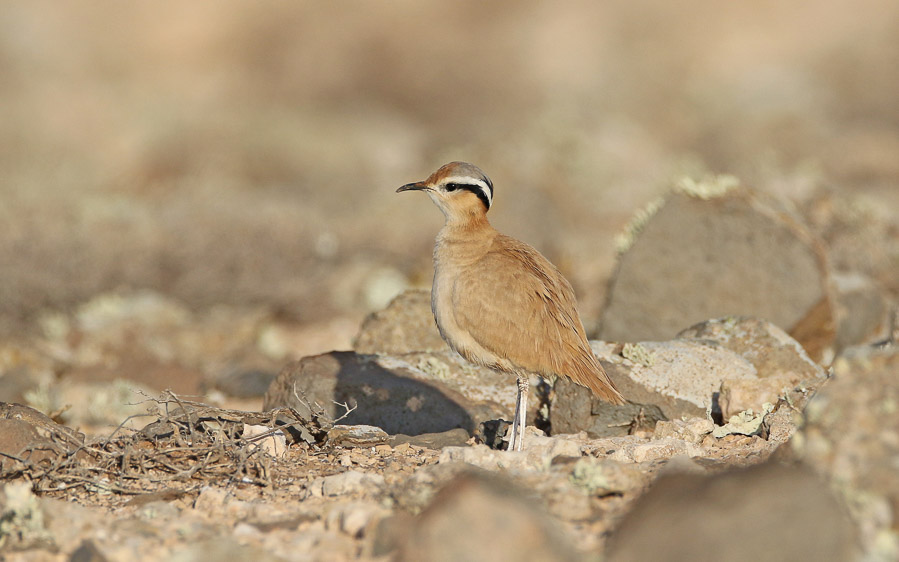
We will bird across wetlands, wadies, palm-tree forests, and coastal scrub, visiting famous natural sites such as the immense limestone Wadi Dirhur Canyon, the endless sea of white sand at Zahek Dune Field, and the towering sand dunes at Arher Beach. During our exploration, we will keep our eyes peeled for rare species possible on Socotra, such as Lichtenstein’s Sandgrouse, Nubian Nightjar, White-browed Coucal, Forbes-Watson’s Swift, Cream-colored Courser, Black-crowned Sparrow-Lark, Peregrine Falcon, Slender-billed Gull, and Namaqua Dove. On one of the days, we will have a guided snorkel of the Dihamari marine protected area to explore the diverse coral reef just off the beach.
Overnight: Summerland Hotel
Day 8. Targeting any missing specials
This day will be kept flexible, depending on our success throughout the tour. We may want to revisit the higher elevation sites if we have yet to see the rare Socotra Bunting and Socotra Golden-winged Grosbeak well. Alternatively, we may revisit some of the lowland wetland sites, which are a mecca for migrating species. Given the remoteness of the island, we have a chance of encountering some exciting migrants that are infrequently recorded on Socotra or have yet to be recorded on the island!
Overnight: Summerland Hotel
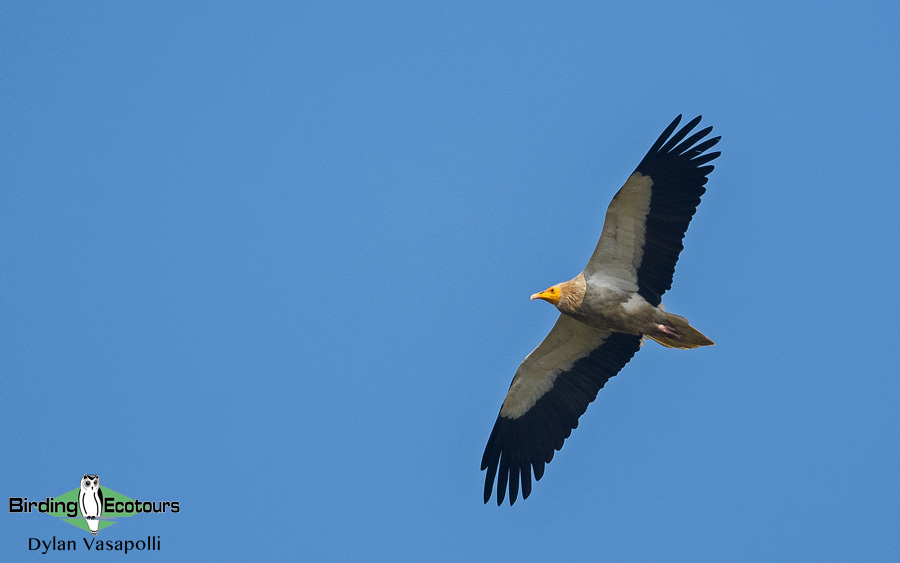
Day 9. Tour concludes, departure from Socotra
After a relaxed breakfast we will depart Socotra for Abu Dhabi, where the tour will end.
Overnight: Not included
Please note that the itinerary cannot be guaranteed as it is only a rough guide and can be changed (usually slightly) due to factors such as availability of accommodation, updated information on the state of accommodation, roads, or birding sites, the discretion of the guides and other factors. In addition, we sometimes have to use a different guide from the one advertised due to tour scheduling or other factors.
Download Itinerary